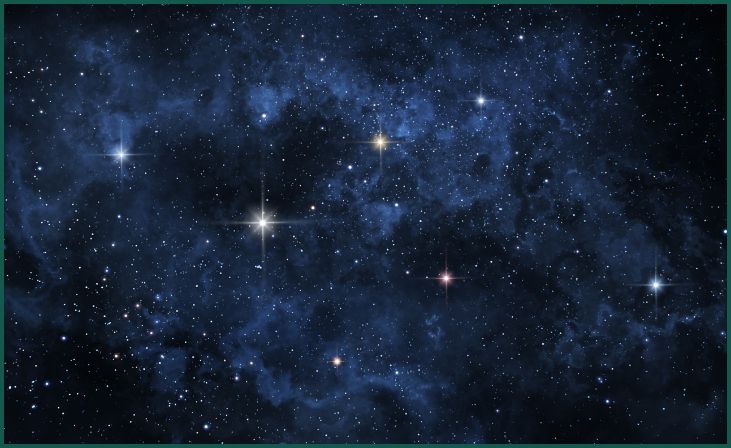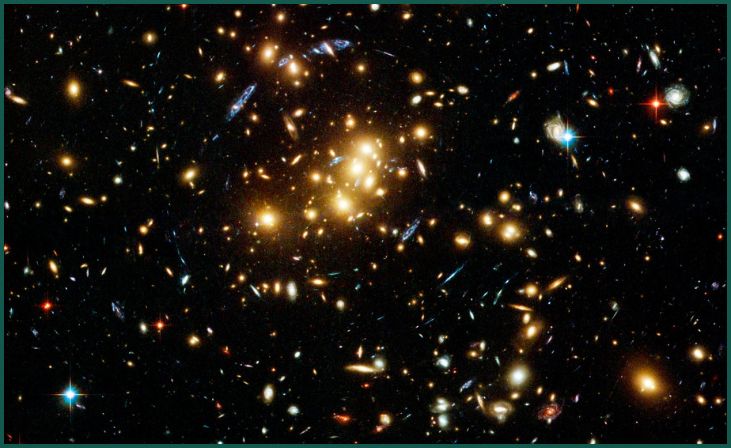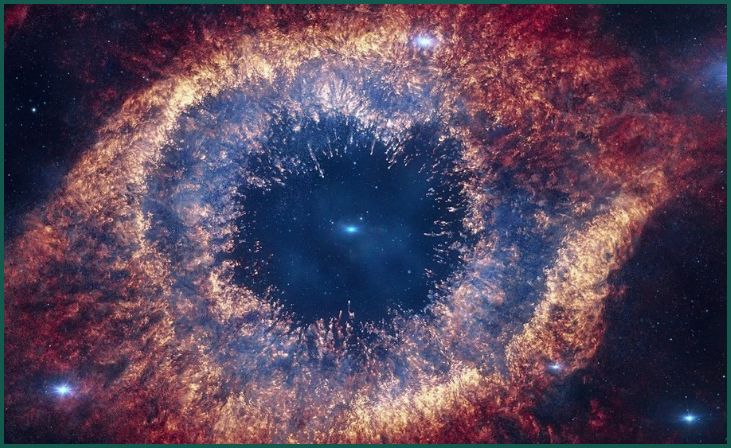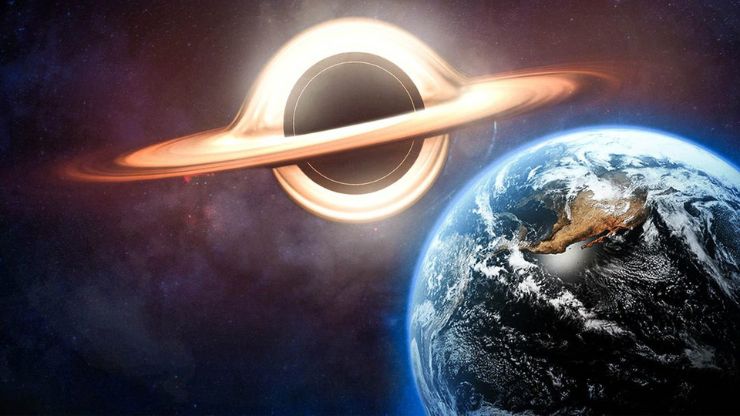In the vast expanse of space, scientists have recently discovered a massive structure that defies our current understanding of the universe. This monumental finding challenges conventional theories and prompts a reevaluation of our cosmic knowledge. Stretching across millions of light-years, this colossal structure poses intriguing questions about the formation and evolution of galaxies and the underlying principles that govern the universe’s structure. As researchers delve deeper into this cosmic mystery, they strive to unravel its secrets and shed light on the fundamental nature of the cosmos. Join us as we explore the implications of this awe-inspiring discovery and delve into the forefront of astronomical research, where every new revelation pushes the boundaries of human comprehension and expands our vision of the cosmos.
Table of Contents
ToggleHuge structure in space challenges our understanding of the universe, scientists say
The Discovery of the Massive Cosmic Structure

Recently, scientists have made a groundbreaking discovery that challenges our understanding of the universe—an enormous structure located about 12 billion light-years away. This colossal structure, which spans over 1.4 billion light-years in diameter, is composed of densely packed clusters of galaxies connected by vast filaments of dark matter. The discovery was made using data from the Sloan Digital Sky Survey (SDSS), a large-scale astronomical survey that maps the three-dimensional distribution of galaxies and cosmic structures in the universe. The existence of such a massive and intricate structure raises intriguing questions about the formation and evolution of the cosmos.
Also Read: 10 Most Valuable Nickels & Rare Nickels Worth Money
Implications for Cosmology and Astrophysics
The discovery of this massive cosmic structure has significant implications for our understanding of the universe’s large-scale structure and evolution. It challenges existing cosmological models and theories, which predict a more homogeneous distribution of matter on cosmic scales. The presence of such a colossal structure suggests that gravity and dark matter play a more significant role in shaping the cosmic web than previously thought. Understanding the formation and evolution of such massive structures sheds light on the underlying processes that govern the growth and distribution of galaxies and cosmic structures across the cosmos. It also provides valuable insights into the nature of dark matter and its role in the cosmic web’s formation and evolution.
Unraveling the Mysteries of Dark Matter and Dark Energy
One of the most intriguing aspects of this discovery is its implications for our understanding of dark matter and dark energy—the mysterious components that make up the majority of the universe’s mass-energy content. Dark matter is believed to be the gravitational “glue” that holds galaxies and cosmic structures together, while dark energy is thought to be responsible for the accelerated expansion of the universe. The discovery of such a massive cosmic structure provides researchers with a unique opportunity to study the distribution and properties of dark matter and dark energy on cosmic scales. By studying the gravitational effects of dark matter on galaxy clusters and cosmic filaments, scientists can glean valuable insights into the nature of these enigmatic phenomena and their role in shaping the universe.
Future Directions in Cosmological Research

The discovery of this massive cosmic structure opens up exciting avenues for future research in cosmology and astrophysics. Scientists are eager to conduct further observations and simulations to better understand the formation and evolution of such colossal structures and their implications for our understanding of the universe. Advanced telescopes and observational techniques, such as the upcoming James Webb Space Telescope (JWST) and next-generation ground-based observatories, will enable researchers to probe deeper into the cosmos and uncover more secrets hidden within the cosmic web. By unraveling the mysteries of the universe’s large-scale structure, scientists hope to gain a deeper understanding of the cosmos’s origin, evolution, and ultimate fate.
Don't just scroll, subscribe!
BuzzTrail's unique web-stories are the cure for boredom you've been waiting for.
Exploring the Origins of the Cosmic Structure
One of the key questions that scientists are eager to address is the origin of this massive cosmic structure and how it formed over cosmic time scales. The prevailing theory suggests that cosmic structures like galaxies, clusters, and filaments form through the gravitational collapse of primordial density fluctuations in the early universe. However, the formation of such a massive structure challenges our current understanding of structure formation and requires further investigation. Researchers are exploring various hypotheses, including the role of cosmic inflation, primordial gravitational waves, and the interplay between dark matter and baryonic matter, in shaping the cosmic web on such large scales.
Insights into Galaxy Evolution and Formation
The discovery of this massive cosmic structure also provides valuable insights into the evolution and formation of galaxies within the cosmic web. Galaxies are not isolated entities but are interconnected within the larger cosmic framework, influenced by the gravitational forces exerted by neighboring galaxies, clusters, and cosmic filaments. By studying the distribution and properties of galaxies within this massive structure, scientists can gain a better understanding of how galaxies form, evolve, and interact with their cosmic environment over billions of years. This research has implications for our understanding of galaxy formation mechanisms, star formation histories, and the assembly of galactic structures across cosmic time.
Addressing Fundamental Questions in Astrophysics

The discovery of such a massive cosmic structure raises fundamental questions about the nature of the universe, its composition, and its ultimate fate. Scientists are eager to explore the properties of dark matter and dark energy within this structure and how they influence the cosmic web’s evolution. Understanding the distribution and dynamics of dark matter and dark energy on cosmic scales is crucial for testing cosmological models and theories and refining our understanding of the universe’s fundamental properties. By studying the gravitational effects of dark matter and dark energy on cosmic structures, scientists can probe the nature of these elusive components and their role in shaping the cosmos on the largest scales.
Also Read: 7 Best NBA Shooting Guards Drafted In The Last 10 Years
Collaborative Efforts and Future Discoveries
Addressing the mysteries surrounding this massive cosmic structure requires collaborative efforts among astronomers, astrophysicists, cosmologists, and theorists from around the world. International collaborations, such as the SDSS and the European Space Agency’s Euclid mission, are essential for gathering observational data, conducting simulations, and developing theoretical models to explain the origin and evolution of cosmic structures. With ongoing advancements in observational technology, computational techniques, and theoretical frameworks, scientists are optimistic about uncovering more secrets hidden within the cosmic web and advancing our understanding of the universe’s mysteries in the years to come.
Conclusion
In conclusion, the discovery of a massive structure in space presents an exciting opportunity for scientific inquiry and exploration. As scientists grapple with the implications of this monumental finding, they are propelled towards new frontiers of knowledge and understanding. This discovery challenges us to reconsider our preconceived notions about the universe and encourages us to embrace the ever-evolving nature of scientific discovery. Through continued research and observation, we inch closer to unraveling the mysteries of the cosmos and gaining deeper insights into the fundamental forces that shape our existence. With each new revelation, we move towards a more comprehensive understanding of the vast and enigmatic universe that surrounds us.
FAQs
What is the huge structure in space that scientists have discovered?
What is the huge structure in space that scientists have discovered?
The huge structure in space recently discovered by scientists is a colossal cosmic arrangement stretching across millions of light-years, challenging our current understanding of the universe’s structure and evolution.
How does this discovery challenge our understanding of the universe?
How does this discovery challenge our understanding of the universe?
This discovery challenges conventional theories about the formation and evolution of galaxies, prompting scientists to reevaluate existing models and theories regarding the fundamental principles that govern the cosmos.

